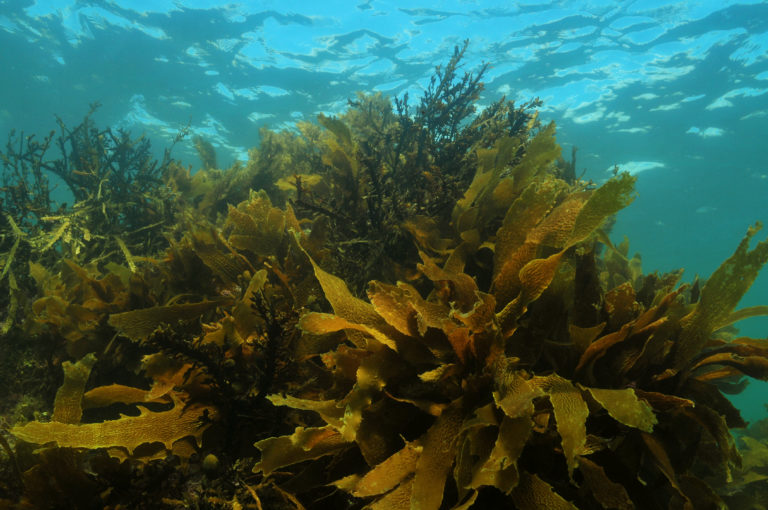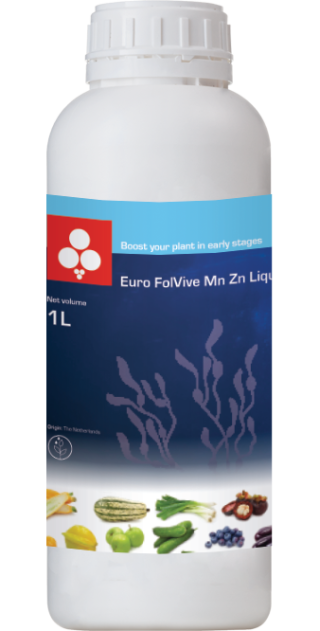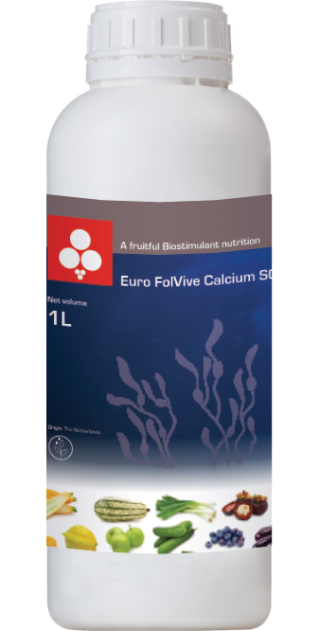Seaweeds are used in agriculture since the 17th Century. For example to improve resistance to drought. Combined with new technologies and due to climate changes, seaweed is the number one biostimulant used by growers worldwide.
New solutions for agriculture
According international IPCC panel the temperature on Earth is expected to increase 1,8 to 4°C. This leads to more extreme weather conditions like drought, heat, extreme rainfall and hail.
How should global agriculture cope with this?
- Breeding solutions: we can develop new crop varieties and root stocks that are adapted to the new environmental conditions.
- Farming solutions: we can innovate on irrigation and water management and improve soil structure with soil amendments.
- Crop management solutions: we can adapt plant nutrition and combine nutrition with the usage of biostimulants like seaweed.
Ascophyllum nodosum

Ascophyllum nodosum is the most researched seaweed species for agricultural use. Originated from the pristine waters of the North Atlantic, it is exposed to extreme weather conditions and is capable of thriving in very high as well as sub-zero temperatures (-25°C in winter to +40°C in summer). Ascophyllum nodosum experiences extreme tide variances. Being exposed to freezing salt water at high tide in winter, and extreme heat at low tide in summer, Ascophyllum nodosum has adapted to live in the intertidal zone by evolving its biochemical compounds to overcome severe abiotic stress. This capability combined with a specific extraction method to keep all resistance property to the seaweed makes Ascophyllum nodosum the prefect biostimulant.
Combining nutrition with biostimulation
Euro FolVive® is a new generation of foliar fertilizers with a unique technical approach combining nutrition and biostimulation. Euro FolVive® contains a high level of mineral nutrients enriched with 15% of top quality Canadian Ascophyllum nodosum from our partner Acadian Plant Health™. It helps growers to get the best out of their crops, especially under difficult growing conditions.
Independent of the harvesting season our Ascophyllum nodosum used for Euro FolVive® has a constant biochemical composition. It is harvested by hand and extracted right after. A gentle extraction process is used to rupture cell walls and release the components without damaging them.
Using Euro FolVive® enables the grower to transfer the stress resistance properties to the plant in a consistent way and guarantees an efficient uptake of the nutrients.

"We saw some very positive results of using Euro FolVive B Liquid on our sunflowers. After only 2 applications of 3 liters, the seeds are still soft and fresh which promises good yield and oil content."
 Rody El KhalilMaria Invest, Romania
Rody El KhalilMaria Invest, Romania
Proven effects of seaweed
The combination of our Ascophyllum nodosum with 100% chelated Micronutrients explains the increased NUE when using Euro FolVive®. Studies show synergistic effects when our high quality seaweed is combined with nutrients. Trials have shown the results of wood analysis on apple trees in winter time. It proved an increased uptake of nutrients like Iron and Zinc in treated trees compared to the control.
The increased resistance to abiotic stress and NUE leads to an improved overall health of the crop. Especially when the crop has to deal with excessive heat or drought for example.
Trials have shown the effects of Euro FolVive® on table grapes. The Euro FolVive® was applied 5 times during the growth cycle at a rate of 0.75 l/ha /treatment. Results show an improved crop quality, especially in relation to increased bunch weight (+16%) and berry size (+6%).
The use of Ascophyllum nodosum also effects the yield, especially when growing conditions are harsh.
Trials have shown the effect of Euro FolVive® on rice and corn grown under extreme conditions. In the rice trial Euro FolVive® was applied at a rate of 0.2 l/ha at initiation of tillering and during flower initiation. In the corn trial Euro FolVive® was applied at a rate of 0.25 l/ha, at eight leaf collars stage and during pre-tasseling. Minerals were applied according to farmers practice. Results show an increase of yield with respectively 11% and 24% in comparison to farmers practice without the use of seaweed.

